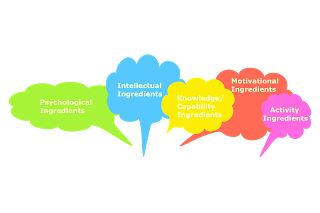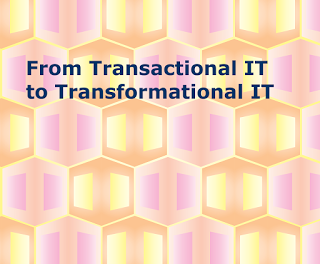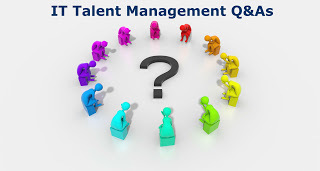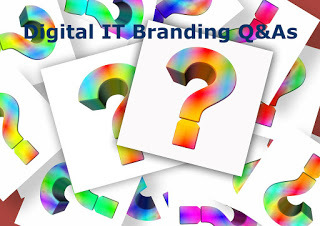Pearl Zhu's Blog, page 1234
April 22, 2017
The Monthly “100 Creativity Ingredients” Book Tuning -Psychological Ingredients Apr. 2017
 All humans are born with raw creativity ability. Creativity has many dimensions, with multi-faceted truth and myth, manifold knowledge and multidimensional insight. Creativity is wings of our mind and tempo of our heartbeat. Creativity is a constructive disruption, not so bad addiction, and a sensational phenomenon. The purpose of “100 Creativity Ingredients - Everyone’s Playbook to Unlock Creativity “is to classify, scrutinize, articulate, and share insight about one hundred special creativity ingredients, to paint the picture with them, to add colors on them, to embed the music into them, and to make the story via them, in order to unleash our collective creativity potential. “100 Creativity Ingredients” Book Tuning - Psychological IngredientsA Connecting Mind? Human’s brain has been separated as left brain and right brain, and majority of people in the world are either more left brainer or right brainer or being called the “half-brainer,” However, in order to master the complexity emerging with digitalization, the connecting mind which can connect dots more freely and seamlessly is most wanted for spurring creativity or thinking holistically?
All humans are born with raw creativity ability. Creativity has many dimensions, with multi-faceted truth and myth, manifold knowledge and multidimensional insight. Creativity is wings of our mind and tempo of our heartbeat. Creativity is a constructive disruption, not so bad addiction, and a sensational phenomenon. The purpose of “100 Creativity Ingredients - Everyone’s Playbook to Unlock Creativity “is to classify, scrutinize, articulate, and share insight about one hundred special creativity ingredients, to paint the picture with them, to add colors on them, to embed the music into them, and to make the story via them, in order to unleash our collective creativity potential. “100 Creativity Ingredients” Book Tuning - Psychological IngredientsA Connecting Mind? Human’s brain has been separated as left brain and right brain, and majority of people in the world are either more left brainer or right brainer or being called the “half-brainer,” However, in order to master the complexity emerging with digitalization, the connecting mind which can connect dots more freely and seamlessly is most wanted for spurring creativity or thinking holistically?
Thinking Out-of-the-Box, What is your Box Though? Every mind has a certain box, some smaller, some bigger; the box starts set-up at a very early age, by your surroundings, the education you received, the people you interacted with and the standards by which you lived. The "boxes" are the walls in your mind. Walls in your mind are constructed by society's conditioning (rules imposed by parents, teachers, leaders, media, books, etc). When you allow information into being accepted as absolute "truth" without first using critical thinking, it inhibits your ability to also think creatively. So in order to think "out of the box," you have to clarify what's inside your box, though?
An Artist’s Mind? The impression for artists has the mixed bag of reputation, the idea of 'the artist' being extravagant, egoistic, overly emotional and moody is a less positive modern perception; in pose modern vision, others equal artists’ quality to the creativity, and analogize creativity is just like the painter’s colors well mixed into the shapes, the designs, the expressions, and concept, etc. What’s inside an artist’s mind though.
 A “Rule-less” Mind? There is good rules and bad rules, visible rules and hidden rules, local rules or global rules; some rule or laws we have to follow to be a good citizen in the nation or the fine resident on the earth. However, it is not every rule being created equally. More often, the more we make or live by rules (made by silo mind or negative culture), the more we are like to take on sides of a story rather than more easily seeing all sides of the story. So, if we wish to be seeing more works using systemic thinking, we would need to work reducing our penchant need for living by rules. But if we do not live by rules, what do we live by, though, and what is the advantage for cultivating a "ruleless” mind.
A “Rule-less” Mind? There is good rules and bad rules, visible rules and hidden rules, local rules or global rules; some rule or laws we have to follow to be a good citizen in the nation or the fine resident on the earth. However, it is not every rule being created equally. More often, the more we make or live by rules (made by silo mind or negative culture), the more we are like to take on sides of a story rather than more easily seeing all sides of the story. So, if we wish to be seeing more works using systemic thinking, we would need to work reducing our penchant need for living by rules. But if we do not live by rules, what do we live by, though, and what is the advantage for cultivating a "ruleless” mind.
A Child-Like Mindset We all have the childhood, we may still remember our imagination when we were a child, but cannot memorize such imaginable moment when we grow up. Is child-like mindset more audacious, intuitive, open and nature?
The “Future of CIO” Blog has reached 1.8 million page views with about 3700+ blog posting in 59+ different categories of leadership, management, strategy, digitalization, change/talent, etc. The content richness is not for its own sake, but to convey the vision and share the wisdom. Blogging is not about writing, but about thinking; it’s not just about WHAT to say, but about WHY to say, and HOW to say it. It reflects the color and shade of your thought patterns, and it indicates the peaks and curves of your thinking waves. Unlike pure entertainment, quality and professional content takes time for digesting, contemplation and engaging, and therefore, it takes the time to attract the "hungry minds" and the "deep souls." It’s the journey to amplify your voice, deepen your digital footprints, and match your way for human progression.
Follow us at: @Pearl_Zhu
Published on April 22, 2017 22:48
What are the Biggest Barriers to Digital Effectiveness in Organizations?
 Digital transformation is the rough road with all bumps and curves on the way. There are a number of challenges common in transformation programs, such as having a clear vision, getting the right strategies, execution, a forward-thinking leader to convey the transformational vision, and a broader view of consumer demand, etc. More specifically, what are the biggest barriers to digital effectiveness and how to overcome them for improving business performance and maturity?
Digital transformation is the rough road with all bumps and curves on the way. There are a number of challenges common in transformation programs, such as having a clear vision, getting the right strategies, execution, a forward-thinking leader to convey the transformational vision, and a broader view of consumer demand, etc. More specifically, what are the biggest barriers to digital effectiveness and how to overcome them for improving business performance and maturity?
Silo thinking cloudy the digital vision and decrease digital effectiveness: The industrial organization with silo functional setting is to achieve the certain level of functional efficiency (doing more with less or doing things right from functional lens), but often decrease business effectiveness (doing the right things from the holistic business perspective). At the business level, silo creates barriers that surface between departments within an organization, So, it easily creates the gaps and often leads unhealthy internal competitions for the limited resources. causing people who are supposed to be on the same team to work against each other. At their heart, silos are not a structural issue, they are the result of poor thinking. and it is one of the most frustrating aspects of life in any large mature organization. The solution to breaking down silo is to apply bigger thinking, to implement an effective cross-silo strategy, better integral processes, and collaborative communication. Digital leaders have to not only provide clear process guidelines but also see that the teams are embracing cross-functional collaboration and taking customer-centric effort as well.
The organizational management shortsightedness and running the business in transactional mode causes digital ineffectiveness for the long run: Digital transformation is a long-term journey, to move up the organizational maturity level as the strategic business partner, businesses need to shift from transactional mode to transformational mode. Often the middle management is the bottleneck of business effectiveness and gets stuck with change inertia. Digital is full of uncertainty, velocity, complexity and ambiguity. Business will be more effective and successful when they realize that one of their greatest strengths will be their change capability. There is no prescribed change formula, or one size fits all change scenario. Ignorance of unknown is another pitfall which could fail change and decrease business ineffectiveness. Thus, to avoid the trap of nearsightedness, the long-term business plan needs to be a cross-functional collaborative effort, not something one team does alone in a corner, in order to improve the entire digital business effectiveness. Cross-functional leadership team needs to discuss with the business on how it can facilitate, enable and catalyze the business growth and continuous changes.
 Doing the wrong things well won’t improve business effectiveness: One of the pitfalls for transformation, either for improvement or innovation is sometimes getting the 'right answer' to the 'wrong question. Doing the wrong things differently isn't transformation. Digital transformation is a leapfrogging business change. There are many pitfalls on the way, first things first, frame the right questions before answering them, ensure doing the right things to improve digital effectiveness before doing things right for achieving efficiency. However, many business change or transformational effort are symptomatic of not having a comprehensive and step-wise approach to manage a seamless transformation. It is important to define and achieve the well-setting business goals and ensure the organization as the whole is superior to the sum of pieces.
Doing the wrong things well won’t improve business effectiveness: One of the pitfalls for transformation, either for improvement or innovation is sometimes getting the 'right answer' to the 'wrong question. Doing the wrong things differently isn't transformation. Digital transformation is a leapfrogging business change. There are many pitfalls on the way, first things first, frame the right questions before answering them, ensure doing the right things to improve digital effectiveness before doing things right for achieving efficiency. However, many business change or transformational effort are symptomatic of not having a comprehensive and step-wise approach to manage a seamless transformation. It is important to define and achieve the well-setting business goals and ensure the organization as the whole is superior to the sum of pieces.
Silo mindset, cloudy vision, poor strategy, overly rigid business processes, low mature business capability, or disengaged employees, etc, are all big barriers to the digital ineffectiveness of the organization. Digital organizations reach the premium level of maturity, which really means a lot, such as business effectiveness, agility, innovation, intelligence, and people-centricity. Organizations which operate this way have happy staff and customers, superior business capabilities, strong balance sheet, and positive social influence upon the environment. They are the digital masters who are courageous to be in the vanguard of digital transformation with a quantum lead.
Follow us at: @Pearl_Zhu
Published on April 22, 2017 22:43
The New Book “Digital IT - 100 Q&As” Conclusion: From Debating to Innovating
 Modern IT organizations face many challenges. It is not sufficient to only keep the lights on. It has to brainstorm on how to do things better. The debating is a critical thinking activity which helps to build the culture of openness. Because the effective debating is tough and direct, needs to practice critical thinking, creative thinking, logic, and reasoning.
Modern IT organizations face many challenges. It is not sufficient to only keep the lights on. It has to brainstorm on how to do things better. The debating is a critical thinking activity which helps to build the culture of openness. Because the effective debating is tough and direct, needs to practice critical thinking, creative thinking, logic, and reasoning.
IT leaders need to learn how to ask open questions to spur healthy debating: Due to the changing nature of technology, IT leadership role should continue to evolve and shift the focus, to move up the maturity level. More and more CIOs are requested to take more responsibility and many CIOs present the breadth of leadership competency besides technique proficiency. The CIO needs to be able to recognize areas of deficiencies and inefficiencies, then ask the open questions such as, “Why not?” “What if?” or “How can we..?” to through the challenges for IT teams to solve them creatively. Greate CIOs have the right blend of leadership skills, business acumen, and technical knowledge. IT leaders must show that they are interested in both the bottom line efficiency and the top line business growth.
Focus on building the culture of openness and innovation: In order to win the debate, you would need to practice critical thinking, and deepen your understanding of the subjects, and you would need to plan strategies and tactics to win the debate which would require applied multidimensional thinking in order to discover and execute things effectively. It does help o build the culture of openness and innovation. The art of debating is much more about open communications, brainstorming, and understanding things via different angles. The proactive IT debates help IT leaders and professionals brainstorm innovative and better ways to do things, and improve digital management capabilities and effectiveness.
 Shed some light on digital transformation: The purpose of this book “Digital IT - 100 Q&As” is to shed some light on digital transformation, help today’s digital leaders and professionals gain lesson learned and develop the best and next practices for their organization’s growth and business transformation. It is what you learned, and these thoughts, ideas, and actions can be added to your list of best practices for the situation next time. It helps you learn what to do, what not to do, and make your management practices stand out. One of the key determinants of whether an organization can move to the digital new normal is the digital maturity of its people, they have to keep inquisitive, informative, and innovative.
Shed some light on digital transformation: The purpose of this book “Digital IT - 100 Q&As” is to shed some light on digital transformation, help today’s digital leaders and professionals gain lesson learned and develop the best and next practices for their organization’s growth and business transformation. It is what you learned, and these thoughts, ideas, and actions can be added to your list of best practices for the situation next time. It helps you learn what to do, what not to do, and make your management practices stand out. One of the key determinants of whether an organization can move to the digital new normal is the digital maturity of its people, they have to keep inquisitive, informative, and innovative. The digital organization is a living body, every individual is like an active cell to keep growing and flowing. The purpose of these healthy debates is to share digital insight, stimulate creativity, encourage brainstorming, and keep people in the growth mode for managing changes and leapfrogging digital transformation effortlessly.Follow us at: @Pearl_Zhu
Published on April 22, 2017 22:40
The New Book “Digital IT - 100 Q&As” From Debating to Innovating
 Modern IT organizations face many challenges. It is not sufficient to only keep the lights on. It has to brainstorm on how to do things better. The debating is a critical thinking activity which helps to build the culture of openness. Because the effective debating is tough and direct, needs to practice critical thinking, creative thinking, logic, and reasoning.
Modern IT organizations face many challenges. It is not sufficient to only keep the lights on. It has to brainstorm on how to do things better. The debating is a critical thinking activity which helps to build the culture of openness. Because the effective debating is tough and direct, needs to practice critical thinking, creative thinking, logic, and reasoning.
IT leaders need to learn how to ask open questions to spur healthy debating: Due to the changing nature of technology, IT leadership role should continue to evolve and shift the focus, to move up the maturity level. More and more CIOs are requested to take more responsibility and many CIOs present the breadth of leadership competency besides technique proficiency. The CIO needs to be able to recognize areas of deficiencies and inefficiencies, then ask the open questions such as, “Why not?” “What if?” or “How can we..?” to through the challenges for IT teams to solve them creatively. Greate CIOs have the right blend of leadership skills, business acumen, and technical knowledge. IT leaders must show that they are interested in both the bottom line efficiency and the top line business growth.
Focus on building the culture of openness and innovation: In order to win the debate, you would need to practice critical thinking, and deepen your understanding of the subjects, and you would need to plan strategies and tactics to win the debate which would require applied multidimensional thinking in order to discover and execute things effectively. It does help o build the culture of openness and innovation. The art of debating is much more about open communications, brainstorming, and understanding things via different angles. The proactive IT debates help IT leaders and professionals brainstorm innovative and better ways to do things, and improve digital management capabilities and effectiveness.
 Shed some light on digital transformation: The purpose of this book “Digital IT - 100 Q&As” is to shed some light on digital transformation, help today’s digital leaders and professionals gain lesson learned and develop the best and next practices for their organization’s growth and business transformation. It is what you learned, and these thoughts, ideas, and actions can be added to your list of best practices for the situation next time. It helps you learn what to do, what not to do, and make your management practices stand out. One of the key determinants of whether an organization can move to the digital new normal is the digital maturity of its people, they have to keep inquisitive, informative, and innovative.
Shed some light on digital transformation: The purpose of this book “Digital IT - 100 Q&As” is to shed some light on digital transformation, help today’s digital leaders and professionals gain lesson learned and develop the best and next practices for their organization’s growth and business transformation. It is what you learned, and these thoughts, ideas, and actions can be added to your list of best practices for the situation next time. It helps you learn what to do, what not to do, and make your management practices stand out. One of the key determinants of whether an organization can move to the digital new normal is the digital maturity of its people, they have to keep inquisitive, informative, and innovative. The digital organization is a living body, every individual is like an active cell to keep growing and flowing. The purpose of these healthy debates is to share digital insight, stimulate creativity, encourage brainstorming, and keep people in the growth mode for managing changes and leapfrogging digital transformation effortlessly.Follow us at: @Pearl_Zhu
Published on April 22, 2017 22:40
April 21, 2017
Blogging, Thinking, Brainstorming, Envisioning, and Innovating
 It’s the time to celebrate the 3700th blog posting. Blogging is not just about writing, but about thinking, brainstorming, envisioning, and innovating. The intention of creating the “Future of CIO” blog is to sow the innovation seed, share knowledge & insight, make continuous communication, and create a unique digital landscape for accelerating business transformation and leadership maturity.
It’s the time to celebrate the 3700th blog posting. Blogging is not just about writing, but about thinking, brainstorming, envisioning, and innovating. The intention of creating the “Future of CIO” blog is to sow the innovation seed, share knowledge & insight, make continuous communication, and create a unique digital landscape for accelerating business transformation and leadership maturity.
Digital leaders are lifetime learner with a thirst for knowledge, insight, and wisdom: Digital leadership is the journey of continuous learning and making leadership influence. Leadership is a journey from good to great. Greatness is what you overcome. The difficult situations, challenges, problems, all those things that make you suffer lead to greatness if you could overcome and learn from them. Leaders have to make a conscious choice to continuously learn, practice and improve upon the leadership quality and influence. Digital leaders need to be ambidextrous, both having the ability to “Talk the Walk” for abstracting your thoughts and leadership philosophy based on your own experience and understanding, and “Walk the Talk,” via following digital principles and practicing leadership disciplines. Leadership is a principle.The bridge between the old school management and innovative digital leadership is to set up timeless principles. Leadership is a principle, but often you have to break down the outdated rules in order to lead forward.
Digital leaders are change agents, they are quite eager and enthusiastic to drive challenging digital transformation initiatives: Remember, leadership isn't a job title; leadership really is a character and personal development, you must continue to learn and improve upon the leadership capabilities. It is imperative that digital "leadership" needs to be re-imagined, explored, understood and embraced for it to be of any value. Effective leadership must come from in-depth understanding and build a set of capability to make sound judgments & effective decisions. The quality of your thinking decides your leadership effectiveness and profundity. Leadership competency is based on the soundness of judgment and decision effectiveness for solving problems directly or indirectly. Due to the “VUCA” characteristics of the digital era, High IQ + High EQ are not sufficient to make a great digital leader. Digital leadership is the state of mind, to continuously connect dots and catalyze creativity: Today’s digital leaders must have multidimensional intelligence, to practice brain power for boosting creativity, dealing with paradox, overcoming silos, cultivating culture intelligence, and embracing holism.
 Becoming a leader is a process of becoming your true authentic self in all that you are today and "to be" in the future: Ask the big “WHY” question to discover your intention to lead. The leadership authenticity and will power. The foundation of leadership is based on AUTHENTICITY. An authentic leader fills a certain gap or multiple gaps in order to lead to the future. And then you can dig through your innate strength and discover your leadership niche, to enforce your leadership influence. Be authentic is to be true to oneself and to have the ability to know that nobody is perfect but can live a dream perfectly. Being able to quickly articulate the value that you bring to others is critical to helping others learn about how you can benefit them. Leadership needs to be profound. Go one inch deeper, the leadership can be 1000 times+ more effective. To achieve this ideal or philosophy we must nurture the attitude, and build it with the aptitude.
Becoming a leader is a process of becoming your true authentic self in all that you are today and "to be" in the future: Ask the big “WHY” question to discover your intention to lead. The leadership authenticity and will power. The foundation of leadership is based on AUTHENTICITY. An authentic leader fills a certain gap or multiple gaps in order to lead to the future. And then you can dig through your innate strength and discover your leadership niche, to enforce your leadership influence. Be authentic is to be true to oneself and to have the ability to know that nobody is perfect but can live a dream perfectly. Being able to quickly articulate the value that you bring to others is critical to helping others learn about how you can benefit them. Leadership needs to be profound. Go one inch deeper, the leadership can be 1000 times+ more effective. To achieve this ideal or philosophy we must nurture the attitude, and build it with the aptitude.
The path to digital leadership mastery is something that unfolds day by day. At the hyper-connected digital era, to break down stereotypical biases or any types of career ceilings, positive mindset, continuous delivery, expert power, and dynamic digital footprint become the very significant part of being “who you are.” Leadership is the state of mind and a set of hard capabilities to make a continuous delivery and maintain a consistent reputation.
The defining qualities that will distinguish great leaders from the rest are stemmed from the mindset level.
Authenticity is the most fundamental, but challenging attribute for leadership.
Innovative leadership is essentially anchored on the leader’s overall multifaceted resourcefulness and multidimensional competencies.
It seems to be many leaders have more conventional wisdom, but creative leaders have better common sense.Innovative leadership is essentially anchored on the leader’s overall multifaceted resourcefulness and multidimensional competencies.A wise leader doesn’t just follow but discover the path.The substance of leadership never changes, it’s all about making a positive influence, and providing the right direction.
A fundamental purpose of leadership is to provide vision and empower change.The more gaps a leader can mind, the better and bigger influence she or he can make.Follow us at: @Pearl_Zhu
Published on April 21, 2017 23:15
The New Book “Digital IT - 100 Q&As” Chapter X Digital IT Talent Management Q&As
 Digital workplaces are diverse and dynamic and digital workforces are multi-generational, multicultural, and multidivicing today. IT skills gap is not a fiction, but a reality. CIOs need to think constructively about IT talent competencies at both at the strategic and operational level. IT leaders play a crucial role in identifying talent gaps and align talent skills and collective human capabilities with strategy execution. The best or next digital talent management practices should encourage innovation, inspire learning, spur healthy debates and take a structural approach to make the digital transformation.
Digital workplaces are diverse and dynamic and digital workforces are multi-generational, multicultural, and multidivicing today. IT skills gap is not a fiction, but a reality. CIOs need to think constructively about IT talent competencies at both at the strategic and operational level. IT leaders play a crucial role in identifying talent gaps and align talent skills and collective human capabilities with strategy execution. The best or next digital talent management practices should encourage innovation, inspire learning, spur healthy debates and take a structural approach to make the digital transformation.
IT talent gap - Why does it happen and how to fill it? Due to the changing nature of technology and accelerating the speed of business changes among the most pervasive and persistent concerns or complaints from IT leaders is the skills gap, such as they can’t find the right skills to fill the positions or their non-IT partners do not understand IT, etc. The effective solution is to start educating by opening the doors to true knowledge. Hire mindset and capabilities, train for specific skills. The premise is that you should hire capability and intelligence, not just specific skill, as the skills change so rapidly due to the shortened knowledge and technology life cycle. The knowledge (skills) acquisition issue is a systemic problem. Overall, technology tends to be more dynamic in a company as well as across the industry, while leadership/management/industry changes more slowly. The key is to recognize that they both change and demand everyone to continuously maintain and grow their expertise/skills. While there are clear opportunities to better prepare HR partners, as well as IT managers on how to more effectively manage talent life cycle, the digital principles include hiring mindset and capabilities, also train for skills.
How to define IT talent competency: Measuring knowledge workers’ performance is perhaps much tougher than measuring IT performance because there are many variables and intangible factors to leverage. Most of the performance management systems today rewards mediocrity rather than encourages excellence. Traditional competency model puts too much focus on the quantified result, with ignorance of taking qualified or innovative effort, or only measures the short-term productivity, without taking enough consideration of the long-term potential realization. IT staff’s collective competitive necessity will “Keep the Lights On,” but their collective uniqueness can help grow and even transform the organization. Hence, the management needs to pay more attention to those shining spots: Who can bring unique POVs, who can find better way to solve problems, who can delight customers; who has the courage to debate with bosses with intention to innovate, or who are those transformers to push the business up to higher maturity. That said, both attitude and aptitude count. Well define the updated competency model, assess the talent’s overall capability to solve problems, strike the right balance of learning capability, character, skills, communication, and energy within the team. Organizations should recruit correct mindset, ability to learn and grow for the long-term business growth.
 How do you take the long-term view to driving workforce performance? At its core, performance management is about creating a work environment that helps your company meet its business goals. It’s more than just a collection of tools and processes, although there are many that can help you meet your goals. There isn’t any general rule on how to drive workforce performance. It’s the management practice that doesn’t have hard-coded programming like other business systems but directly drives corporate mindset, attitude, and behavior. A process could be put in place to understand what flaws are in place, impeding the good performance and its improvement. Designing a performance management system that makes sense for your company depends on many factors, including the nature of your business, your company culture, and your strategic goals. With increasing speed of change, the performance of Performance Management needs to be continuously assessed and adjusted as well. The best performance management system needs to tie everyone in the organization to the company’s profit and also company’s rewards, and at the same time, there are individual performance incentives which are measured against personal goals. This keeps all employees working together while at the same time push the individual to exceed their personal goals, to create a win-win situation for both individuals and the organization.
How do you take the long-term view to driving workforce performance? At its core, performance management is about creating a work environment that helps your company meet its business goals. It’s more than just a collection of tools and processes, although there are many that can help you meet your goals. There isn’t any general rule on how to drive workforce performance. It’s the management practice that doesn’t have hard-coded programming like other business systems but directly drives corporate mindset, attitude, and behavior. A process could be put in place to understand what flaws are in place, impeding the good performance and its improvement. Designing a performance management system that makes sense for your company depends on many factors, including the nature of your business, your company culture, and your strategic goals. With increasing speed of change, the performance of Performance Management needs to be continuously assessed and adjusted as well. The best performance management system needs to tie everyone in the organization to the company’s profit and also company’s rewards, and at the same time, there are individual performance incentives which are measured against personal goals. This keeps all employees working together while at the same time push the individual to exceed their personal goals, to create a win-win situation for both individuals and the organization. Talent development is a continuous effort to groom the right digital leaders and workforce for the business’s long-term prosperity. The best talent management practices should encourage innovation, inspire learning, take a structural approach to digital transformation. Follow us at: @Pearl_Zhu
Published on April 21, 2017 23:08
April 20, 2017
The Weekly Insight of the “Future of CIO” 4/21/ 2017
 The “Future of CIO” Blog has reached 1.8 million page views with 3700+ blog posting in 59+ different categories of leadership, management, strategy, digitalization, change/talent, etc. The content richness is not for its own sake, but to convey the vision and share the wisdom. Here is the weekly insight about digital leadership, IT Management, and Talent Management.
The “Future of CIO” Blog has reached 1.8 million page views with 3700+ blog posting in 59+ different categories of leadership, management, strategy, digitalization, change/talent, etc. The content richness is not for its own sake, but to convey the vision and share the wisdom. Here is the weekly insight about digital leadership, IT Management, and Talent Management.
The Weekly Insight of the “Future of CIO” 4/21/2017Digital Boards as “Leadership Masters”: The board in a high-level leadership position plays a crucial role in business advising and monitoring, as well as setting key digital tones in organizational culture style and leadership quintessential. A high mature digital board is like a brighter light tower to guiding the business toward the right direction and take all these significant responsibilities more “thoughtfully.” Here are three leadership inquiries help digital BoDs sharpen their leadership capabilities and improve their directorship effectiveness.
The New Book “Digital IT - 100 Q&As” Chapter V Digital IT Potential Q&As: Due to increasing speed of changes and overwhelming growth of information, forward-looking organizations across industrial sectors claim they are in the information management businesses, and there is a high expectation of IT to drive changes and lead the digital transformation. Hence, it is important to spurring healthy debates for brainstorming how to run an innovative IT organization, how IT contributes to customer acquisition and retention, and how to run digital IT as a revenue rainmaker. The payoff of IT digital transformation is not just for the quick win, but to build the long-term business competency?
The Monthly “IT Innovation” Book Tuning Apr. 2017 IT plays a significant role in managing information-knowledge-insight cycle and fostering innovation by leveraging disruptive technologies and enriched information flow. But more specifically, how can IT build differentiated capabilities to become an information power center and an innovation hub? The purpose of “IT innovation - Reinvent IT for the Digital Age” is to help business and IT leaders and digital professionals ride above the learning curve, reinvent IT as an innovation hub and game changer; reimagine IT as an innovation outlier; renovate a hybrid IT and digital organization; fine-tune IT as the digital whole brain of the organization; accelerate IT on the fast lane, rebuild IT as the business capability multiplier; empower IT as a digital change agent; and leverage the “alphabetic elements” to run a highly innovative IT organization for the digital age
Non Linearity as the Characteristic of Digital Ecosystem The digital world is a holistic ecosystem - nature, world, or the ecosystem sometimes is used interchangeably. It is all the products of a physically, chemically, biologically, cognologically, linguistically, technologically evolving nature, in that sequence. Digital is fluid, digital is also complex. It becomes complex if things do interact, particularly in the case of "non-linear" interaction, you can't separate things properly or you cannot predict the actual effect of interaction straightforwardly. In fact, nonlinearity is one of the very characteristics of digital business ecosystems.
 Three Questions to Define IT Key Performance Indicator Today’s IT organization intends to become the business’s growth engine, rather than just a maintenance back-office; a value center, not just a cost center; be proactive rather than reactive., etc. How to measure IT performance can be the right step to improve IT maturity. So, what are the important key performance questions and related KPIs for IT today?
Three Questions to Define IT Key Performance Indicator Today’s IT organization intends to become the business’s growth engine, rather than just a maintenance back-office; a value center, not just a cost center; be proactive rather than reactive., etc. How to measure IT performance can be the right step to improve IT maturity. So, what are the important key performance questions and related KPIs for IT today?
Blogging is not about writing, but about thinking and innovating the new ideas; it’s not just about WHAT to say, but about WHY to say, and HOW to say it. It reflects the color and shade of your thought patterns, and it indicates the peaks and curves of your thinking waves. Unlike pure entertainment, quality and professional content takes time for digesting, contemplation and engaging, and therefore, it takes the time to attract the "hungry minds" and the "deep souls." It’s the journey to amplify diverse voices and deepen digital footprints, and it's the way to harness your innovative spirit.
Follow us at: @Pearl_Zhu
Published on April 20, 2017 23:26
Digital Boards with Vision Inquiries
 The contemporary corporate board as the top leadership team plays a directorial role in envisioning the future of the business and overseeing corporate strategy. Because leadership is about future and change. Vision is not the “Nice to have,” but “Must have” quality for top leaders in order to direct the organization toward the uncharted water or blurred territories in today’s “VUCA” digital dynamic. Vision is basically a qualitative statement defining the "perception" of the organization, and the effective board provides guidance about what core to preserve and what future to stimulate progress toward. Here are a few vision inquiries of digital boards.
The contemporary corporate board as the top leadership team plays a directorial role in envisioning the future of the business and overseeing corporate strategy. Because leadership is about future and change. Vision is not the “Nice to have,” but “Must have” quality for top leaders in order to direct the organization toward the uncharted water or blurred territories in today’s “VUCA” digital dynamic. Vision is basically a qualitative statement defining the "perception" of the organization, and the effective board provides guidance about what core to preserve and what future to stimulate progress toward. Here are a few vision inquiries of digital boards.
Does the board articulate its role in supporting a long-term vision for the business effectively? Vision statements bear you long term goals that you have envisioned for the growth of your business, your reason for existence. Vision is a destination, and strategy is the roadmap. As the vision is like a journey you want to embark on, but you would need the knowledge and capabilities to implement, this journey roadmap is "strategy." The corporate board needs to play the directorial role by scrutinizing both effectively. If the company has a clear vision, everything starts moving in right direction. If the leadership team can design a good strategy and execute it well, it can achieve the high-performance business result for the long term. The vision statement is very difficult to establish if the company (the executive teams and shareholders) doesn't have a strategic analysis, a strategy, and the most important thing, a purpose of business. Hence, the visionary board can play an important role in both envisioning and supporting a long-term vision for the business’s long-term prosperity.
How often is the vision thing discussed at board meetings? Vision is required at any given stage of an organization’s life span. Without continuous envisioning of a better future, organizations will become short-sighted, static, and even irrelevant. A vision is an integral part of any company’s strategy. As you cannot plan your strategy if you do not know what your vision for the company is. Hence, the vision thing needs to be revisited when the board oversees the dynamic business strategy. Furthermore, no vision and strategy will ever be successful without the input from ALL staff in the total company. The board can invite the business visionaries to the meeting. So often vision and strategy are treated as confidential and no "buy in" from shop floor level is achieved. Thereby negating complete participation at all levels. Digital means the increasing speed of change, building a change vision is often most difficult as it requires alignment at the most senior levels (such as the board level) and needs to link to the overall strategic imperatives of the company. Given that a change vision includes a coherent and powerful statement of what the desired future state can be and focuses on common goals, everyone must have the same definition of the future state. Only then can you develop a compelling change story that all employees can relate to. The corporate board should set the tone to “baking in” the vision into the DNA (culture) and drive change proactively.
 What could make your vision cloudy and how to clarify it etc: A vision is how you see the future unfolding, how you dream about what the future will look like from your standpoint, and how to direct people and business toward the destination you envisioned? The strategy makes a vision happen. The true vision is a reflective process of an organization really understanding itself and its purpose, to perceive the future of business. The vision could be cloudy due to the “VUCA” characteristics of digital new normal. Anybody with a dream can draw up a vision. It needs people such as BoDs with the strategic insight into the problem to carve up the vision in actionable steps. Nowadays there are too many distractions which could cloudy your vision, thus, visionary leaders are always the rare breed and in strong demand, because they are able to look further and perceive deeper, based on their both intuition and analysis. At its core, leadership is the journey for problem-solving. Visionary leaders see possibilities before others, but they also need to tackle great challenges with grand consequences over long time spans; they convey a vision based on principles that make an advanced movement. Visionary leaders often have better sense to capture the business trend, be genuinely curious about information, knowledge and future perspectives, so they can clarify the vision and drive changes more confidently.
What could make your vision cloudy and how to clarify it etc: A vision is how you see the future unfolding, how you dream about what the future will look like from your standpoint, and how to direct people and business toward the destination you envisioned? The strategy makes a vision happen. The true vision is a reflective process of an organization really understanding itself and its purpose, to perceive the future of business. The vision could be cloudy due to the “VUCA” characteristics of digital new normal. Anybody with a dream can draw up a vision. It needs people such as BoDs with the strategic insight into the problem to carve up the vision in actionable steps. Nowadays there are too many distractions which could cloudy your vision, thus, visionary leaders are always the rare breed and in strong demand, because they are able to look further and perceive deeper, based on their both intuition and analysis. At its core, leadership is the journey for problem-solving. Visionary leaders see possibilities before others, but they also need to tackle great challenges with grand consequences over long time spans; they convey a vision based on principles that make an advanced movement. Visionary leaders often have better sense to capture the business trend, be genuinely curious about information, knowledge and future perspectives, so they can clarify the vision and drive changes more confidently.
Leadership or directorship is about setting directions and inspiring changes. The vision thing does need to become the common topic at the big table. Because if the strategy has been crafted without a clear vision, it may never reach the true destination. “Make vision reachable” and "make strategy happen" has to be accessible, understandable and made relevant to all levels of the organization for keeping the team on the same page and drive the business toward the right direction steadfastly.
Follow us at: @Pearl_Zhu
Published on April 20, 2017 23:22
The New Book “Digital IT - 100 Q&As” Chapter IX Digital IT Branding Q&As
 A high-performing, high proactive, and high-innovative IT is the key success factor for the digital transformation of the business. However, the majority of IT organizations still get stuck at the lower level of maturity, being perceived as the support desk and cost center. Hence, to reinvent IT, IT branding needs to be part of IT transformation effort. Start with IT self-evaluation - take a critical look at IT, you shoud be honest with yourself about assessing the strengths and weaknesses of IT organization objectively, and spark the healthy debates on how to rebrand IT as the innovation hub and growth engine of the digital business?
A high-performing, high proactive, and high-innovative IT is the key success factor for the digital transformation of the business. However, the majority of IT organizations still get stuck at the lower level of maturity, being perceived as the support desk and cost center. Hence, to reinvent IT, IT branding needs to be part of IT transformation effort. Start with IT self-evaluation - take a critical look at IT, you shoud be honest with yourself about assessing the strengths and weaknesses of IT organization objectively, and spark the healthy debates on how to rebrand IT as the innovation hub and growth engine of the digital business?
Though choice for IT: Change the name or reboot the mindset? IT becomes so pervasive and critical, information is the lifeblood of the organization, and IT is the business’s “digital brain.” More and more forward-looking organizations declare they are in the information management business. Some suggested IT change to information service department, others think business technology division better fits for IT mission. Well, put emphasis on either “I” or “T” only seems to just tell the half of IT story. Information without technology is outdated bits and bytes, and technology without information is old nuts and bolt. Overall speaking, IT (Information Technology) is not necessarily so bad name, it well articulates what is doing. IT branding should be a holistic management discipline and a well-planned effort. Changing the name is an easier part, only scratch the surface, the hard part is to reboot IT mindset to keep it digital fit. After rebooting mindset, the next step is to retool IT management. The processes include: Reformulate principles, develop strategy, restructure the organization and present a new value proposition. IT needs to more proactively participate co-creating the business strategy, IT should become the trusted business partner. It is at the turning point to turning the IT brand around, running IT like a business.
Why doesn’t IT get respected: IT seems to be always in the hot seat due to the fast-growing information, “disruptive nature” of technology, and increasing speed of change. IT seems also to be at the paradoxical position, on one hand, it becomes so critical to the success of the business; on the other hand, many IT organizations earn very little respect from business peers, without getting invited to the big table, and being perceived as an isolated support center. Ineffective communication between IT leaders and top management is one of the root causes of IT and business gaps. The misalignment to targets and concepts between too distant worlds and languages can create important risks to the business, and lack of respect for IT might be a co-product of this issue. IT does not get much respect because often the folks associated with IT function are not good at asking questions. Many IT specialists feel that they should tell or assert when asking or probing is often much more influential Choosing the wrong individual for crucial roles on both sides of the fence is the other reason to cause IT and business gaps. To gain respect, IT strategy needs to be an integral part of business strategy. What needs to happen at a CIO level is for IT to be seen as a crucial and positive business advantage and then IT will sit at the right level and gain the business respect.
 Where is the focal point to brand IT effectively? The majority of IT organizations today are still being portrayed as the back-office cost center, to reimagine IT, IT branding needs to be part of IT transformation effort. Your brand identity will be the face you put on your IT organization and it flows from your brand strategy. IT brand identity should be supported by the message you create and how to distribute to your customers.For successful IT branding, basically, you are asking yourself: What are we trying to accomplish? Are we on the right path? What do we aspire to achieve? Is “what we look” consistent upon “who we are”? Create a comprehensive list of the IT organization’s strengths, weakness, goals, and objectives based on self-evaluation, surveys, and cross-functional communications. Your goals and objectives will be your drivers. Your strengths and weaknesses will be your constraints. Create metrics for the delivery of the key messages, put them in the objectives of IT managers and start tracking them accordingly. There are best and next digital practices to create and reinforce IT brand, to promote innovation and create new knowledge streams. The business goal for IT branding is to have all audiences at every level of enterprise weighed-in with delight.
Where is the focal point to brand IT effectively? The majority of IT organizations today are still being portrayed as the back-office cost center, to reimagine IT, IT branding needs to be part of IT transformation effort. Your brand identity will be the face you put on your IT organization and it flows from your brand strategy. IT brand identity should be supported by the message you create and how to distribute to your customers.For successful IT branding, basically, you are asking yourself: What are we trying to accomplish? Are we on the right path? What do we aspire to achieve? Is “what we look” consistent upon “who we are”? Create a comprehensive list of the IT organization’s strengths, weakness, goals, and objectives based on self-evaluation, surveys, and cross-functional communications. Your goals and objectives will be your drivers. Your strengths and weaknesses will be your constraints. Create metrics for the delivery of the key messages, put them in the objectives of IT managers and start tracking them accordingly. There are best and next digital practices to create and reinforce IT brand, to promote innovation and create new knowledge streams. The business goal for IT branding is to have all audiences at every level of enterprise weighed-in with delight. IT today has a finger in every pie that the organization has. It’s omnipresent and either venerated or hated, the influence of IT cannot be underrated. Most of IT organizations have the intention to improve itself, regardless of methodology, it is about the management practices and personnel management to build a solid IT brand as the strategic business partner. Follow us at: @Pearl_Zhu
Published on April 20, 2017 23:18
April 19, 2017
The Monthly “Dot Connections” to Strike the Right Digital Balance Apr. 2017
Digital is the age of creativity and innovation, and creativity is all about connecting the dots.
 The effects of an increasingly digitalized world are now reaching into every corner of businesses and every aspect of organizations. Digital is the age of creativity and innovation, creativity is the most wanted trait for digital leaders and professionals today, and innovation is the light every organization is pursuing. Creativity is all about connecting the dots. Which dots shall you connect between leadership and management in order to improve business effectiveness and accelerate digital transformation?Innovation vs. Rules Innovation is to transform novel ideas and achieve its business value. Innovation is doing something better than it currently is. Hence, it requires a sound and competent understanding of what is currently being done. Innovation is not serendipity, it's a mindset, a process, and the strategic business capability nowadays. From innovation management perspective, should innovators break rules, or does innovation need rules, and how to improve manage innovation effortlessly and improve its success rate? Strategic Management vs. Operational Management Strategic management as long-term planning requires a vision. In other words, a company needs to define where it wants to be in a decade or two (what's the vision) and how they want to get there (Strategy) and then Operational Management will translate the long-term plans into smaller scale plans to operationalize the move toward the vision.How to Strike the Right Balance between Agility and Stability? Organizations large or small are on the journey to digital transformation, the paradox is that you need to keep the light on to maintain the stability, but also be adaptive to the changes caused by digital disruption with increasing speed. Hence, many businesses just have to run the bi-modal mode: the industrial speed to do what they always do, and the digital speed by leveraging innovation to experiment the new way to do things. But philosophically and methodologically, what’s the right balance between being quick to adopt new methods and risking them for failing, and sticking with tried and tested ones and risking them becoming obsolete? Or more broadly speaking, how to strike the right balance between agility and stability?
The effects of an increasingly digitalized world are now reaching into every corner of businesses and every aspect of organizations. Digital is the age of creativity and innovation, creativity is the most wanted trait for digital leaders and professionals today, and innovation is the light every organization is pursuing. Creativity is all about connecting the dots. Which dots shall you connect between leadership and management in order to improve business effectiveness and accelerate digital transformation?Innovation vs. Rules Innovation is to transform novel ideas and achieve its business value. Innovation is doing something better than it currently is. Hence, it requires a sound and competent understanding of what is currently being done. Innovation is not serendipity, it's a mindset, a process, and the strategic business capability nowadays. From innovation management perspective, should innovators break rules, or does innovation need rules, and how to improve manage innovation effortlessly and improve its success rate? Strategic Management vs. Operational Management Strategic management as long-term planning requires a vision. In other words, a company needs to define where it wants to be in a decade or two (what's the vision) and how they want to get there (Strategy) and then Operational Management will translate the long-term plans into smaller scale plans to operationalize the move toward the vision.How to Strike the Right Balance between Agility and Stability? Organizations large or small are on the journey to digital transformation, the paradox is that you need to keep the light on to maintain the stability, but also be adaptive to the changes caused by digital disruption with increasing speed. Hence, many businesses just have to run the bi-modal mode: the industrial speed to do what they always do, and the digital speed by leveraging innovation to experiment the new way to do things. But philosophically and methodologically, what’s the right balance between being quick to adopt new methods and risking them for failing, and sticking with tried and tested ones and risking them becoming obsolete? Or more broadly speaking, how to strike the right balance between agility and stability?
 Standardization vs. Innovation? Modern organizations have many hidden paradoxes, for example, customer satisfaction or employee satisfaction, which one comes first? Analytics or intuition, how to make a better decision? Here is another interesting dot connection debate: Standardization vs. Innovation, which one is more important?
Standardization vs. Innovation? Modern organizations have many hidden paradoxes, for example, customer satisfaction or employee satisfaction, which one comes first? Analytics or intuition, how to make a better decision? Here is another interesting dot connection debate: Standardization vs. Innovation, which one is more important?
Leading Indicator vs. Lagging Indicator? As Drucker well pointed out: “You can only manage what you're measured.” Benchmarking and measuring are both science and art. There are many practical metrics and KPIs, but not every metric is created equal. The concept of leading and lagging indicators, as applied to the Balanced Scorecard, relies on an understanding of the cause-effect relationships between KPIs in the different perspectives. But what’re the differences between leading indicators vs. lagging indicators? The “Future of CIO” Blog has reached 1.8 million page views with about #3600th blog posting in 59+ different categories of leadership, management, strategy, digitalization, change/talent, etc. The content richness is not for its own sake, but to convey the vision and share the wisdom. Blogging is not about writing, but about thinking and innovating the new ideas; it’s not just about WHAT to say, but about WHY to say, and HOW to say it. It reflects the color and shade of your thought patterns, and it indicates the peaks and curves of your thinking waves. Unlike pure entertainment, quality and professional content takes time for digesting, contemplation and engaging, and therefore, it takes the time to attract the "hungry minds" and the "deep souls." It’s the journey to amplify diverse voices and deepen digital footprints, and it's the way to harness your innovative spirit.
Follow us at: @Pearl_Zhu
 The effects of an increasingly digitalized world are now reaching into every corner of businesses and every aspect of organizations. Digital is the age of creativity and innovation, creativity is the most wanted trait for digital leaders and professionals today, and innovation is the light every organization is pursuing. Creativity is all about connecting the dots. Which dots shall you connect between leadership and management in order to improve business effectiveness and accelerate digital transformation?Innovation vs. Rules Innovation is to transform novel ideas and achieve its business value. Innovation is doing something better than it currently is. Hence, it requires a sound and competent understanding of what is currently being done. Innovation is not serendipity, it's a mindset, a process, and the strategic business capability nowadays. From innovation management perspective, should innovators break rules, or does innovation need rules, and how to improve manage innovation effortlessly and improve its success rate? Strategic Management vs. Operational Management Strategic management as long-term planning requires a vision. In other words, a company needs to define where it wants to be in a decade or two (what's the vision) and how they want to get there (Strategy) and then Operational Management will translate the long-term plans into smaller scale plans to operationalize the move toward the vision.How to Strike the Right Balance between Agility and Stability? Organizations large or small are on the journey to digital transformation, the paradox is that you need to keep the light on to maintain the stability, but also be adaptive to the changes caused by digital disruption with increasing speed. Hence, many businesses just have to run the bi-modal mode: the industrial speed to do what they always do, and the digital speed by leveraging innovation to experiment the new way to do things. But philosophically and methodologically, what’s the right balance between being quick to adopt new methods and risking them for failing, and sticking with tried and tested ones and risking them becoming obsolete? Or more broadly speaking, how to strike the right balance between agility and stability?
The effects of an increasingly digitalized world are now reaching into every corner of businesses and every aspect of organizations. Digital is the age of creativity and innovation, creativity is the most wanted trait for digital leaders and professionals today, and innovation is the light every organization is pursuing. Creativity is all about connecting the dots. Which dots shall you connect between leadership and management in order to improve business effectiveness and accelerate digital transformation?Innovation vs. Rules Innovation is to transform novel ideas and achieve its business value. Innovation is doing something better than it currently is. Hence, it requires a sound and competent understanding of what is currently being done. Innovation is not serendipity, it's a mindset, a process, and the strategic business capability nowadays. From innovation management perspective, should innovators break rules, or does innovation need rules, and how to improve manage innovation effortlessly and improve its success rate? Strategic Management vs. Operational Management Strategic management as long-term planning requires a vision. In other words, a company needs to define where it wants to be in a decade or two (what's the vision) and how they want to get there (Strategy) and then Operational Management will translate the long-term plans into smaller scale plans to operationalize the move toward the vision.How to Strike the Right Balance between Agility and Stability? Organizations large or small are on the journey to digital transformation, the paradox is that you need to keep the light on to maintain the stability, but also be adaptive to the changes caused by digital disruption with increasing speed. Hence, many businesses just have to run the bi-modal mode: the industrial speed to do what they always do, and the digital speed by leveraging innovation to experiment the new way to do things. But philosophically and methodologically, what’s the right balance between being quick to adopt new methods and risking them for failing, and sticking with tried and tested ones and risking them becoming obsolete? Or more broadly speaking, how to strike the right balance between agility and stability?
 Standardization vs. Innovation? Modern organizations have many hidden paradoxes, for example, customer satisfaction or employee satisfaction, which one comes first? Analytics or intuition, how to make a better decision? Here is another interesting dot connection debate: Standardization vs. Innovation, which one is more important?
Standardization vs. Innovation? Modern organizations have many hidden paradoxes, for example, customer satisfaction or employee satisfaction, which one comes first? Analytics or intuition, how to make a better decision? Here is another interesting dot connection debate: Standardization vs. Innovation, which one is more important?Leading Indicator vs. Lagging Indicator? As Drucker well pointed out: “You can only manage what you're measured.” Benchmarking and measuring are both science and art. There are many practical metrics and KPIs, but not every metric is created equal. The concept of leading and lagging indicators, as applied to the Balanced Scorecard, relies on an understanding of the cause-effect relationships between KPIs in the different perspectives. But what’re the differences between leading indicators vs. lagging indicators? The “Future of CIO” Blog has reached 1.8 million page views with about #3600th blog posting in 59+ different categories of leadership, management, strategy, digitalization, change/talent, etc. The content richness is not for its own sake, but to convey the vision and share the wisdom. Blogging is not about writing, but about thinking and innovating the new ideas; it’s not just about WHAT to say, but about WHY to say, and HOW to say it. It reflects the color and shade of your thought patterns, and it indicates the peaks and curves of your thinking waves. Unlike pure entertainment, quality and professional content takes time for digesting, contemplation and engaging, and therefore, it takes the time to attract the "hungry minds" and the "deep souls." It’s the journey to amplify diverse voices and deepen digital footprints, and it's the way to harness your innovative spirit.
Follow us at: @Pearl_Zhu
Published on April 19, 2017 23:02



